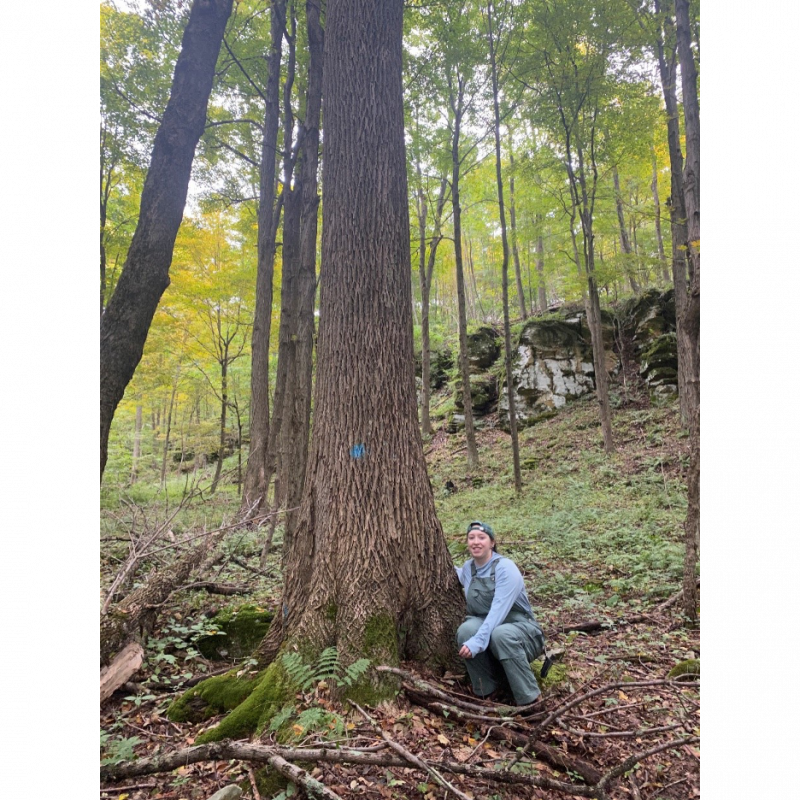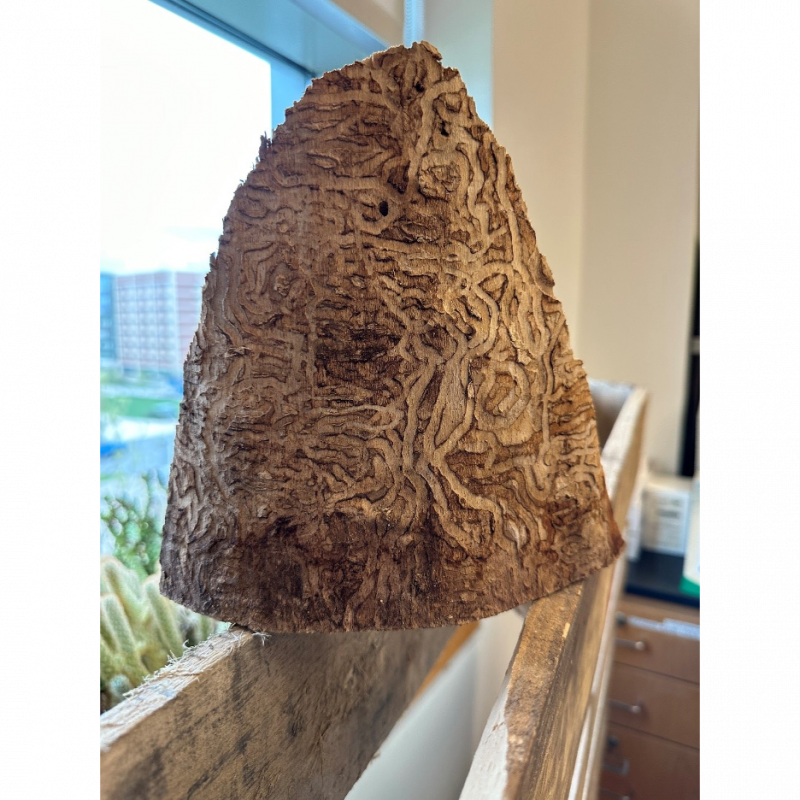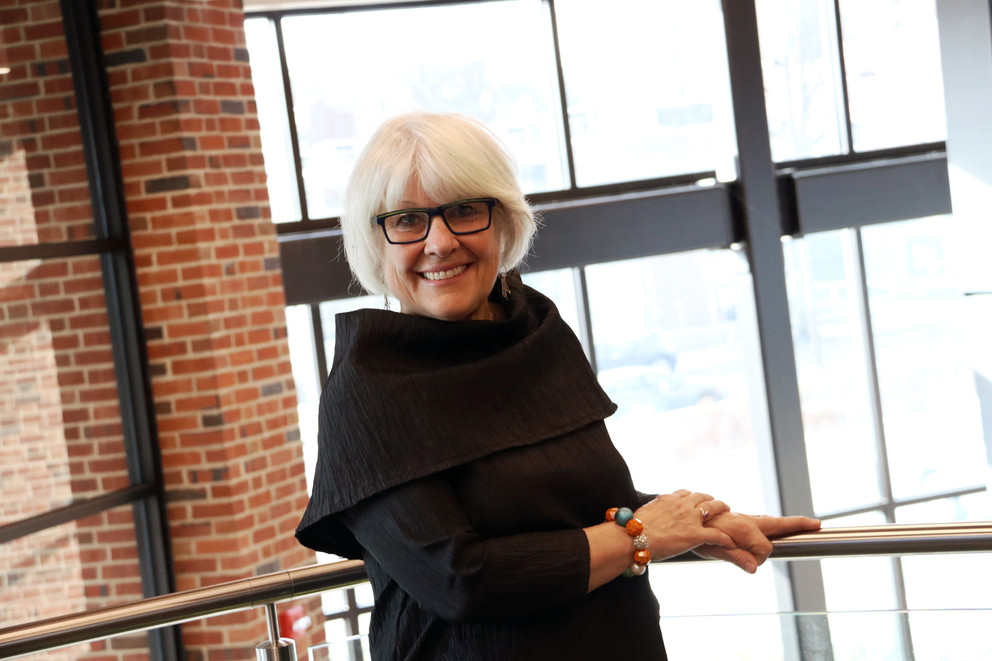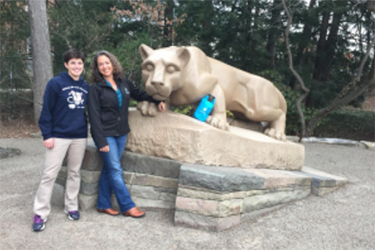Research Spotlight: Arbor Day, Penn State Research in Tree Molecular Genetics
By Halina Dingo
Arbor Day is a holiday dedicated to the planting, upkeep, and appreciation of trees. The holiday originated in 1872 in Nebraska City, when the citizens banded together to change their shadeless landscape and planted over 1 million trees across the state.
Trees play an integral part in ecosystem health and the sequestration of carbon. Even as sources of food, life, and homes for many people and organisms, deforestation continues to threaten tree populations. Arbor Day is a time when communities can come together to preserve and celebrate this resource. At Penn State, there are multiple research groups dedicated to researching trees for the purpose of conservation and learning about how trees interact with their ecosystems.
One such group within the Schatz Center for Tree Molecular Genetics, is focused on the preservation of the Black Ash Tree from the Emerald Ash Borer (EAB). The Emerald Ash Borer (or EAB) is an invasive species of beetle in the United States that is dangerous to Ash trees all over North America. Postdoctoral researcher, Dr. Melissa Lehrer and Ph.D student, Kyra LoPiccolo are both working on projects surrounding the conservation of Ash trees and the effects of the EAB here at Penn State.

Research technician Maureen Beeman sits next to a mature white ash in Sullivan County, PA
“A large part of what we are hoping to do is establish an ex-situ [away from the field] collection of Black Ash seeds across its range,” said Lehrer, “That is important for a couple of reasons. One, because we are collecting seeds from trees that may not exist in the near future, allowing us to conserve the genetic diversity of trees that might otherwise become lost. We can also use this seed collection to look at the impact of changing environments from climate change and the EAB on reproductive-based phenotypes. Finally, we can use these seeds to establish common gardens where we can grow this diverse population of black ash across environments so that we can study adaptation and ultimately preserve genetic diversity on a larger scale.”

Organization and preparation of Black Ash Seeds for preservation.
Ash tree loss has a devastating effect on the ecosystems in which it resides. Black ash trees are unique because they grow in acidic/swampy environments such as bogs. They outcompete most other trees in this area due to their water-loving propensity. In these areas, they can comprise 95% of the total trees. With the loss of these trees comes the loss of canopy cover, habitat, and eventually the loss of swamps or bogs themselves as they turn into open marshes. The EAB attacks these trees by boring into the bark and consuming vascular tissue in the tree called the “phloem”. This impacts the tree’s ability to transport carbohydrates throughout the plant, stunting and damaging the growth process of the tree. Dr. Lehrer’s work on the Ash tree is mainly focused on establishing an ex-situ collection to form a database to reference for the purpose of conserving genetic diversity.
Kyra LoPiccolo’ s research is focused on assessing a wide range of genetic diversity from these tree populations.

An Emerald Ash Borer feeding gallery within a section of ash wood.
“This summer, I’m going to be travelling across the country collecting leaves from all over the range of habitat of the tree, and sending them off for DNA sequencing,” said LoPiccolo, “We’re going to use that data to look at genetic diversity and proxies for genetic health of these species. This will lay a foundation we can use to see how genetic diversity changes in the species from this point forward, as EAB is a huge selective pressure that will be moving across the landscape.”
Not only are black ash trees important for ecosystem health, but they also hold cultural significance to many First Nations communities across North America. Black Ash has been used by Indigenous communities in Maine, Nova Scotia, and New Brunswick for centuries to weave baskets. Additionally, these trees are incorporated into many of these communities’ creation stories. It holds both economic and cultural significance to many Indigenous communities. Now, with the prevalence of the EAB, these important traditions may not be available to be passed down to future generations.
As residents of the areas and habitats that these trees occupy, many Penn Staters and community members in general feel a responsibility to conserve and protect native species. In Pennsylvania specifically, native plant species are endangered from other invasive pests such as the woolly adelgid, which attacks hemlock trees, or the spotted lanternfly, which endangers a wide variety of plants in PA. Part of the importance of Arbor Day is the recognition, appreciation, conservation, educational benefits, and awareness generated and sustained throughout our communities.
“Trees are really a keystone species in our environment. They affect so many parts of an ecosystem from hydrology to the amount of UV radiation reaching all levels of the ecosystem,” said LoPiccolo, “They provide food. They’re central to community networks. One of my favorite aspects of tree conservation is not quite as scientific, but it’s the fact that a lot of people care about trees. So many people are connected to trees, whether it’s from childhood memories or the street where their first house was, everyone has a tree story. I think that connection is also important to conserve for future generations.”
“Even though my research background is not in trees, I have developed a great appreciation for them. I find myself looking at the ground and identifying samaras. I look around campus and notice the wide variety of trees we have,” said Lehrer, “I have a better understanding of how beautiful, functional, and awesome trees are. And now, there are significant risks associated with their health that my role at the Schatz Center has brought to light. It’s given me a newfound motivation to make a difference.”
This Arbor Day, researchers across Penn State are working on conserving trees through establishing seed collections, identifying how pests affect phenotypes of trees, and thinking about how these differences can be leveraged to preserve the genetic diversity of a whole species. Individually, people within the Penn State community can also celebrate Arbor Day and contribute to this work as well. Go outside, hug a tree, and appreciate how integral these species are to our environment. If you plant a tree, make sure you do your due diligence and research what native tree species are appropriate for your area. Additionally, if you want to help combat invasive species such as the EAB, woolly adelgid, and the spotted lanternfly, there are national and state guideline for reporting sightings and disposing of these species that can be found here:
- National guidelines on EAB sightings
- PA State guidelines on EAB sightings
- PA state guidelines on reporting invasive species
Otherwise, check out other projects going on at the Schatz Center for Tree Molecular Genetics and the Hamilton Lab on Plant Evolutionary and Ecological Genetics, and go outside and appreciate the beautiful trees planted all across Penn State’s campus!





